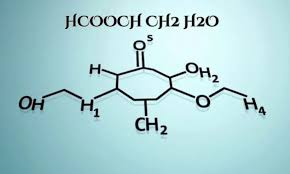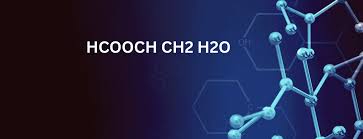Introduction
Chemistry often throws at us strange-looking formulas that make us scratch our heads. One such formula is HCOOCH CH2 H2O. At first glance, it looks like a jumble of groups and water molecules, but when we break it down step by step, it actually tells a story about esters, formates, and chemical reactions with water. Let’s dive deeper into what this mysterious formula might mean.

Breaking Down the Formula
Understanding HCOOCH
The HCOOCH part represents a formate ester group, which comes from formic acid (HCOOH). Formates are commonly used in chemistry as building blocks for fragrances and solvents.
Role of CH2
The CH2 group is a methylene unit. Think of it like a Lego brick—it connects different parts of molecules and often extends the carbon chain.
Importance of H2O
Water (H2O) here could indicate hydration or hydrolysis. In organic chemistry, when water is written with a compound, it usually suggests a reaction is happening.
Possible Chemical Identity
The formula suggests a compound involving a formate ester, a methylene group, and water. This could represent a hydrated ester, or it may be shorthand for an esterification/hydrolysis reaction in progress.
What is an Ester?
Esters are compounds formed when an acid reacts with an alcohol. They are responsible for the sweet smell of fruits like bananas, pineapples, and apples. Perfume industries rely heavily on esters to make fragrances pleasant.
HCOOCH Group in Chemistry
This represents methyl formate or similar derivatives. Methyl formate (HCOOCH3) is a known ester with industrial use in solvents and refrigerants.
The Role of CH2
Adding a CH2 can make the ester longer or change its reactivity. For example, HCOOCH2CH3 becomes ethyl formate, which smells like rum and is used in flavorings.
The H2O Factor
When water is written alongside an ester, it usually means hydrolysis is possible. Hydrolysis breaks down an ester into an acid and alcohol, reversing esterification.
Possible Compound Formed
If we try to interpret it, HCOOCH + CH2 + H2O might be pointing toward ethyl formate or a hydrated derivative. However, the notation looks incomplete, making it more of a concept than a finished formula.
Real-Life Applications
-
Perfumes → esters like formates create fruity smells.
-
Food flavoring → adds aroma to beverages and candies.
-
Solvents → used in plastics and coatings.
Chemical Reactions Involving This Structure
Hydrolysis
Ester + H2O → Acid + Alcohol.
Esterification
Acid + Alcohol → Ester + H2O.
Oxidation Possibilities
Certain esters may oxidize into aldehydes or acids under specific conditions.
Biological Relevance
In living organisms, esters appear in fats, oils, and pheromones. Hydrolysis of esters (like in digestion) is essential for breaking down food molecules.
Safety Considerations
-
Some esters can be flammable.
-
Direct exposure can cause skin or eye irritation.
-
Industrial use requires protective equipment.
Confusions and Misinterpretations
The given formula looks odd because it seems incomplete. Usually, esters are written as RCOOR′, but here we see fragments. It’s possible it was miswritten or shorthand from a reaction scheme.
Connecting It to Known Compounds
-
Methyl formate (HCOOCH3) is the closest recognized compound.
-
Adding CH2 could lead to ethyl formate (HCOOCH2CH3).
-
With H2O, it may represent the reaction stage rather than a stable molecule.
Conclusion
The formula HCOOCH CH2 H2O may look confusing, but by breaking it down, we realize it refers to esters like formates and their reactions with water. While the exact compound is unclear, it most likely represents a hydrated ester or reaction pathway. In real life, esters like methyl formate and ethyl formate play a big role in perfumes, flavors, and solvents.
FAQs
1. What is the correct name of HCOOCH CH2 H2O?
It seems to represent a derivative of formate esters, possibly ethyl formate with water, though the formula itself is incomplete.
2. Is this compound stable?
The structure as written is not a stable standalone compound—it likely represents part of a reaction.
3. Where do we see it in daily life?
You encounter related esters in perfumes, food flavorings, and solvents.
4. Can it exist naturally?
Yes, esters like ethyl formate occur naturally in fruits and even in space (detected in interstellar clouds).
5. Why does the formula look odd?
It is likely a notation mistake or shorthand for a reaction involving esters and water.


